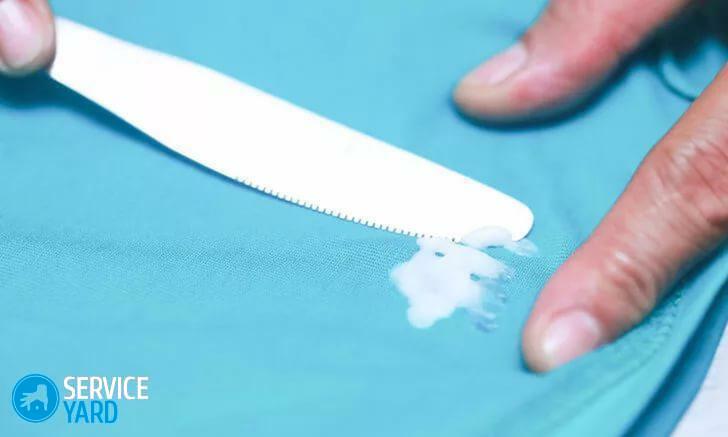
- What is mercury?
- How many grams of mercury is in the thermometer?
- Than mercury is dangerous?
- How many droplets are in the room?
- How long does mercury evaporate from a broken thermometer?
- How much mercury has got into the body?
- So what about mercury?
- Where to find specialists?
- If the service is not nearby
- Brush, wire, powder
- What should I do next?
- Keep the thermometer correctly
Despite the fact that it is increasingly possible to see electronic thermometers in pharmacies, a mercury thermometer is still popular. There are a number of reasons for this, and the main one is the high accuracy of the measurements. It has one significant drawback - it can crash, and then you will not get into trouble if you do not take measures in time. How much mercury is in the thermometer and what to do if it is on the floor? This will be discussed in the article.
to the contents ↑What is mercury?
From the school chemistry course, you probably remember that mercury is a silver liquid metal, quite heavy. Its density is 13.546 g / cc. This substance is extremely toxic. Why is it used in household appliances?
The matter is that mercury under the heating very uniformly expands, both at low and high temperatures. The coefficient of thermal expansion from external factors is practically independent. And this means that the measurements will be very accurate.
Important! Such a thermometer gives measurements with an accuracy of 0.01 °.And it does not depend on how much mercury is in the thermometer.
to content ↑How many grams of mercury are there in a thermometer?
There are several standards for manufacturing medical thermometers:
- In a Russian thermometer, usually from 1 g to 1.5 grams of mercury.
- In European - 2 g.
- Now there are models of Russian thermometers made according to European standards, so they can also have 2 g of silver metal.
Important! Having received such an answer to the question of how much mercury is in the thermometer, many will think that it is, like, a little. But do not delude yourself - such a meager amount of metal can poison a room of 6 thousand cubic meters.
to the contents ↑Why is mercury dangerous?
Mercury itself is harmful, but not as much as its vapors and compounds. They:
- have cumulative properties, that is, they accumulate in the body if they get there;
- are poorly derived, and from some bodies - not output at all;
- are odorless;
- have no taste;
- react with organic substances, and what turns out in the end is very poisonous;
Important! Poisoning from mercury can develop very slowly and gradually.
Vapors and soluble mercury compounds have harmful effects on different systems of the human body:
- immune;
- nerve;
- digestive;
- respiratory.
When poisoning with vapors and compounds of mercury, the kidneys, esophagus, stomach, bronchi, intestinal tract, skin, eyes and many others suffer. It should be borne in mind that an increase in temperature accelerates the mobility of mercury and its derivatives.
Important! Especially dangerous are mercury-organic substances, because they instantly react with enzyme-forming organs, which increases toxicity.
to the contents ↑How many droplets are in the room?
The thermometer in the apartment broke - how much mercury is eroded? Well, let's count, taking as a basis the modern European standard - 2 g, or 2 000 mg. This mass, which in physics and chemistry is denoted by the letter m. So, m = 2000 mg.
Usually, mercury from the head of the thermometer, if there was a nuisance and the thermometer broke, splits into a few rather large drops. But it also happens in another way: for example, when there are a lot of drops and they are such that it is impossible to notice, that is, a diameter( d) of 0.1 mm.
To calculate the surface area of such a droplet of mercury, you must square the diameter and multiply the result by 3.14.The result is 10-4 square centimeters. With an uncomplicated formula, we determine the weight of each ball, for which the density of mercury is multiplied by volume. To calculate the volume, 3.14 is multiplied by the diameter in the cube divided by 6. The volume is 0.52x10-6.Accordingly - the weight, if you multiply the density( 13.6 g / cm3) and the calculated volume, we get 7.07 * 10-6.
Important! If you try to calculate the number of drops, dividing the total mass of mercury in the thermometer by the weight of a single drop, it turns out that the invisible and insensible particles of dangerous metal in the room is already 283 thousand pieces. If we consider that evaporation occurs from the surface of each drop, it becomes clear that there will be plenty of vapors. The surface area of the drop is multiplied by 283, resulting in a total of 90 square centimeters. Is this a lot or a little?
to Contents ↑How long does mercury evaporate from a broken thermometer?
Mercury evaporates at a rate of 0.002 mg per square centimeter per hour. Multiplying the amount of the evaporation surface( 90 cm2) by this value, we get that 0.18 mg of mercury evaporates in an hour.
To understand whether this is dangerous or not, it is necessary to compare the value obtained with the maximum allowable concentration of this substance in the room. It is 0.0003 mg per cubic meter. It turns out that mercury from a broken thermometer is too much.
Important! In fact, this is not entirely true, because for MPC there are certain initial criteria, that is, a threshold concentration for a long time - for example, during the year. The initial criterion is the guarantee amendment, which means a decrease in several times the threshold concentration.
Weekly dose
For substances such as mercury, international organizations have set a maximum weekly dose. It is calculated for 1 kg of weight. For mercury, this value is 5 mg per 1 kg of weight, that is 5 × 10-5 g / kg. On this indicator, you can calculate the allowable dose for each family member, multiplying this indicator by the body weight.
Calculate the amount of air in the housing
The maximum allowable dose can be calculated based on the volume of air in the room. Please note that the average person consumes 25 cubic meters of air per day. Multiply 0.0003 by this number - we get 0.0075 mg / day, then, multiplying the result by 7, we get a weekly allowable dose.
You can determine how dangerous the broken thermometer, by the amount of air in the home. To do this:
- measure the height, length and width of each room and multiply;
- then add to the result the volumes of the remaining rooms.
Important! The fact is that the evaporated mercury is volatile, like all gases, so there is no difference in which room you broke a thermometer - you have to deal with everyone.
 However, the air in the apartment is not at all fixed! With normally operating ventilation, it changes quite rapidly - every hour is replaced by up to 80% of the air. If you calculate the circulation, you get an impressive result - about three hundred cubic meters per hour.
However, the air in the apartment is not at all fixed! With normally operating ventilation, it changes quite rapidly - every hour is replaced by up to 80% of the air. If you calculate the circulation, you get an impressive result - about three hundred cubic meters per hour.
Based on this, calculate the concentration of mercury vapor, dividing 0.18 mg per 300 cubic meters. It turns out to be 0.0006 mg / m3.Let's recall the MPC - 0.0003 mg / m3.A twofold excess is no longer so terrible, although it is impossible to leave it without attention.
Important! It is necessary to take into account a few more points. Over time, the rate of evaporation of mercury drops, respectively - and the concentration decreases. For example, in two weeks it will decrease by one and a half to two times. Based on the information received on how quickly mercury evaporates and in how much, it is possible to make a rational, rather than a hypothetical, conclusion about its harm in a particular apartment where the thermometer broke.
to the contents ↑How much mercury has been ingested?
Count how many hours a week you are at home. For example, 14 hours on weekdays and 20 at weekends. The result is 110 hours. So how much mercury will you inhale during this time? To calculate this, you must multiply 0.0006 by 110( well, or the number that you got).It turns out 0.066 mg of mercury per week. Almost as much as the norm, with allowance for MPC.
to the contents ↑So what to do with mercury?
Based on calculations showing that the number of vapors that have entered your body does not exceed the norms established by international organizers, the conclusion is one - do not panic. Nothing fatal happened. This is a household trouble, not a global catastrophe. Although you can not leave all the namamotec and leave it as it is, it's also not worth it. Of course, if there is a specialized service where demercurization is conducted, it is better to call there. But such organizations are not everywhere.
How does the specialized organization handle the treatment?
When you come to your home, the specialists act like this.
- Measure the concentration of mercury in all rooms, and not only where the thermometer broke.
- Having discovered that the concentration of mercury vapor is higher than the SanPiN norm, they are looking for a source of pollution.
- Localize pollution and take measures to eliminate the mercury background.
- Produce cleaning of everything that is in the room, including furniture, decorative products, household appliances.
- Make a control analysis of the mercury concentration from the thermometer.
Important! Referring to a specialized service is especially necessary if the thermometer is broken by a pregnant woman.
to the contents ↑Where to find specialists?
A broken thermometer is a worldly business, therefore there are many organizations where you can help if necessary:
- Mercury Disposal Service;
- Sanitary and Epidemiological Station;
- various environmental organizations.
If there are usually no issues with sanitary epidemiological station and the mercury disposal service, there are competent specialists and appropriate equipment, and all the necessary certificates and licenses, then with the unknown environmental organizations one must be very cautious.
It is necessary to check:
- is there any licensed chemist;
- is there a license for the relevant activity;
- does the organization have mercury-metric equipment;
- whether the company uses mercury-free oxidants for mercury;
- whether mercury concentrations are measured after treatment.
If services are not nearby
Specialized mercury disposal services, unfortunately, are not available everywhere. What to do if specialists can not come to you, and you need to get rid of the fumes?
Will have to act on their own:
- Remove from the premises of all who are there - it is especially important that the room was not small children and sick.
- Wear a respirator, gloves, if the first is not - gauze bandage. Also you need clothes that you will not feel sorry for later.
- Collect the fragments of a thermometer. Fold them first in a bag, and then in a low jar filled with water. In this case, the bank should be with a tight lid, better - screwed.
- Collect the maximum number of drops of mercury, and place them in the same vessel.
- Do not use the room for several weeks.
- At the door leading from the infected room to other rooms, lay a mat, pre-moistened it in some absorbent.
What are sorbents?
Some substances with which you can collect scattered around the room mercury balls, for sure you have at home. You can collect mercury using:
- manganese oxides;
- of white clay:
- of iron hydroxide.
Important! In addition, mercury perfectly amalgamates any pure metal - copper or steel wire is quite suitable.
to the contents ↑Brush, wire, powder
Insidious silver metal can be removed not by any means. You definitely do not need:
- vacuum cleaner;
- mop;
- wet cloth.
Vacuum cleaner after such cleaning can be thrown away, and the mop and wet rag are simply useless. You need:
- thin copper wire;
- metal powder or sawdust;
- sandpaper;
- can with a sealed cover.
Option 1
You can take, for example, a piece of winding from a transformer or a thin wire from a burned-out power supply of a mobile phone:
- Make a bundle about two fingers thick in a finger.
- For convenience, twist the beam in the middle so that it clings tightly.
- Trim the ends of the wire so that there are no loops.
- Strip both ends of the beam from the varnish using sandpaper.
- Fold the bundle in half, so that both ends are peeled from one side - you should get something like a brush.
- For strength, wind the handle of the brush with a couple of coils of adhesive tape.
- Lightly rinse off the peeled part.
Important! Mercury from the thermometer will stick to this brush, since it has the property of amalgamating metals. At the end of the demercurization, put the brush in the jar and close it tightly with a lid. Mercury should remain on the brush.
Option 2
Sprinkle the infected area with metal powder or metal filings. Rub the powder with a dry rag. Remove the powder in any possible way, and place a rag with the droplets of mercury adhering to it in a jar with a tight lid.
Important! This option is suitable for smooth coatings - such as linoleum, laminate, marble, plastic, etc., but it is not suitable if there are furrows and crevices on the surface.
If the thermometer is broken on the carpet
It happens that the thermometers are beating on soft surfaces. This is the most unpleasant option, especially if the soft surface is a carpet with a pile. It is necessary to tinker, if, of course, you do not want to part with the carpet immediately:
- Cover the infected area with metal powder or sawdust.
- Fold the carpet from the edges to the place where the silvery poison fell.
- Wrap the carpet in a large piece of plastic film.
- Knock out the mat.
- Keep it ventilated.
Important! Part of the droplets will remain on the polyethylene, which you need to pass to a specialized service. But you will not be able to completely clean the carpet.
Carpet without pile or carpet
In this case, getting rid of deadly mercury is much easier. You can use the method with a metal whisk. But another option is also suitable: a medical pear with a narrow nose or a single syringe. With their help, collect droplets of mercury, then pack a pear or syringe tightly and take it.
to the contents ↑What to do next?
To collect mercury is not such a big problem, sometimes it can even be done with a hard white sheet of paper. But there is always a question - what to do with it? To keep a sealed can at home is not the best idea, someone from home can easily drop it. Throw away mercury can not, as well as run into the sewer.
So where do we get this unpleasant metal? You will be assisted in several organizations:
- in the mercury disposal service;
- in the Sanitary and Epidemiological Station;
- in the Ministry of Emergency Situations.
Call there - and you will be given an address where to carry the fragments and silver droplets. It remains only to properly pack them.
to the contents ↑Keep the thermometer correctly
To avoid the hassle with mercury disposal, store the thermometer correctly:
- in a special case;
- out of the reach of children.
- in a closed locker so that pets can not climb in there;
- away from heating appliances and direct sunlight;
- use a medical thermometer strictly for the purpose - to measure with its help the temperature of boiling water definitely is not worth it.
Important! It is best to switch to an electronic thermometer - it gives sufficient accuracy and is absolutely safe.
Now you know not only how much mercury is in the thermometer and how quickly and for a long time it evaporates, but what to do if the thermometer crashed at home. We hope that you managed to do everything correctly and no harm was caused to your health.



